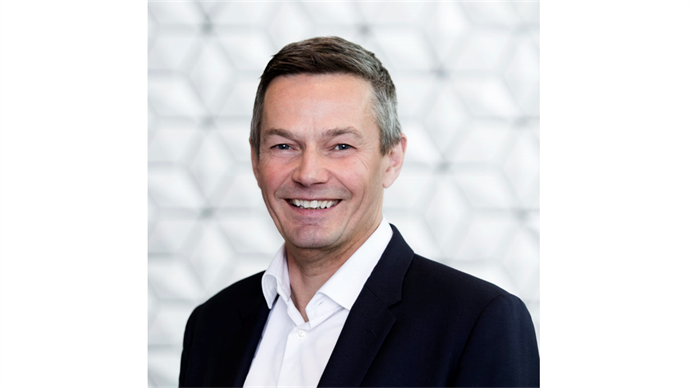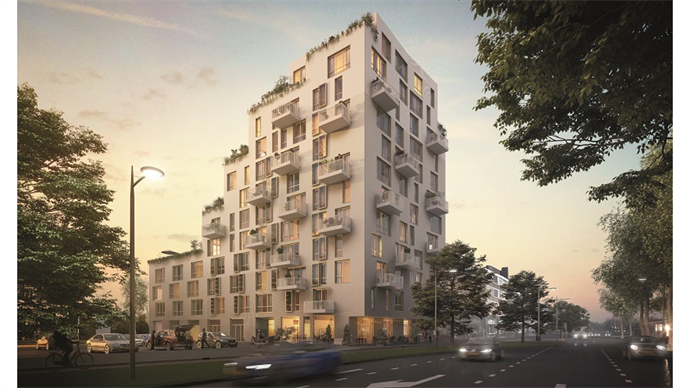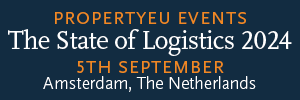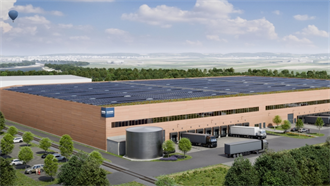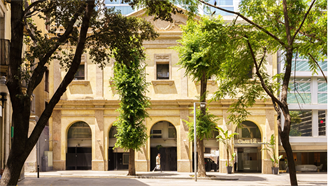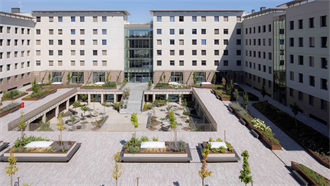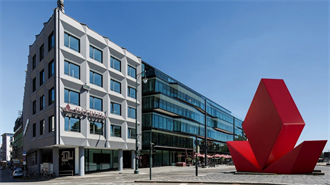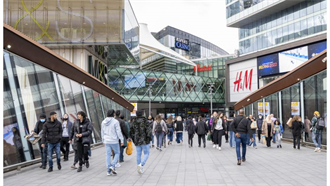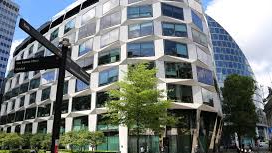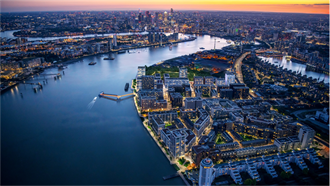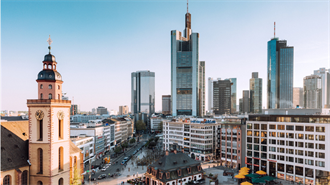Redevco is targeting a healthy mix of residential and retail in its vision for a greener and more liveable urban environment in cities across Europe.
A clear vision for the future of European cities in a post-pandemic world has yet to crystallise, but one thing that has changed irreversibly in the past two years since the Covid-19 outbreak is the high- profile position sustainability has established on government and corporate agendas.
Andrew Vaughan, CEO at Amsterdam-based Redevco, concurs that the climate emergency is an existential threat facing humankind and our cities: ‘Up to now the world has not been treating it like a real crisis, but that is exactly what we now have to do.’
What do you see as the most pressing priorities?
AV: The first thing we need to do is simply stop burning stuff for energy and find energy in renewable sources.
For the real estate and broader construction industry, that means two things: a lot of the materials used in buildings, such as steel, concrete and glass, contain embodied carbon and are produced via highly carbon-intensive processes. That’s one massive challenge that must be tackled. Another is that roughly 70-80% of the buildings we will need in the next 50 years already exist and the carbon is already embodied in them.
It will be an enormous job to improve the quality of these properties, but it can be done by putting solar panels on the roof, for example, and by taking out gas boilers and replacing them with heat pumps. All these things can make a significant difference and buildings that have been around for 100 years or more are already quite sustainable.
How are climate threats and challenges shaping Redevco’s real estate investment strategy?
AV: At Redevco we made a pledge in 2019 to make our entire platform and operations net carbon zero by 2040.
The starting point is measuring. This is why we are installing smart meters in all our buildings. They provide us with a lot of data about their energy consumption and emissions. Once you start measuring, you can also start with actions to improve the energy consumption of our existing buildings within the more holistic BREEAM methodology. For example, through the installation of electric heat pumps and clean solar electricity. It has been a marathon task, but we are on target to achieve our net zero carbon emissions target by 2040.
How is Redevco responding to the environmental and broader challenges that cities face?
AV: Cities face multiple challenges as we are still living through the pandemic. In terms of the climate crisis, buildings clearly contribute to carbon emissions, but we can’t just tear them all down.
We can repurpose some of them and make them fit for future use. I’m a big fan of the 15-minute city and I think there are many ways to make our cities more future proof, for example by developing more flexible buildings that can be used for different functions over time such as residential, offices and hotels.
Cities also need to become greener, literally by bringing nature back into our urban spaces with more vegetation on roofs and urban farming, by making buildings themselves energy neutral and through the electrification of transportation. A greener, quieter, more liveable and energy-efficient city is an enormous prize to go for and a number of cities like Amsterdam, London and Copenhagen are already showing the way.
How do you see European cities evolving in the post-Covid era?
AV: It’s still too early to say. The pandemic has led to a giant global experiment in working from home, but with Teams and Zoom we now know that it is entirely possible to work from wherever you want to. The discussion about flexible and hybrid working is still ongoing, but most people have enjoyed the flexibility and I think the working week in the office has changed forever. People are craving a different way of living their lives with shorter commuting times. The growing popularity of electric bikes will also change the makeup of cities to some extent.
Smaller cities will have massive appeal. I worry at least in the short term a bit more about the bigger cities like Paris and London where workers often need to commute long distances, but they will bounce back. Big cities thrive on a multitude of different sectors like banking, finance, tech, culture and creative industries and all those feeding off these. These cities will always offer a massive attraction thanks to their size and scale so in the longer term they will adapt and thrive again.
How have the requirements of people living and working in the leading European cities changed and how has this affected your strategy?
AV: Our big strategic push on residential hasn’t changed at all. Demand for institutional quality, well-managed residential blocks remains strong, and even if demand softens somewhat because of the pandemic, macro-economic tailwinds continue to prevail in most cities. Retail has hit a bit of a trough; negative sentiment is calming down and we’re even seeing a rebound in some segments.
If you know what you’re doing, like we do, retail is a great segment to be in. It definitely offers significant value because it has been hit so hard, but it’s not for everybody. You really need extraordinary asset management skills, to see the potential of the building and make a redevelopment happen by collaborating with the various stakeholders, like tenants, neighbours and municipalities, in the right way.
Retail parks is another strategy that we are still keen on – it has proved to be very resilient during the pandemic. We’re market leader in Belgium, and we see expansion opportunities across Europe with some repurposing of assets, adding facilities such as flexible offices and broadening the offering to include click and collect, electric vehicle charging points and residential. We also have expertise in hospitality which is very complementary.
Where do you see opportunities to roll out Redevco’s vision for mixed uses and urban place-making?
AV: Everywhere. There are so many opportunities and there’s so much to do. We all know there’s too much retail, but there is still a place for shopping centres and high street stores. Increasingly we know residential in addition to retail, and we are building quite a pipeline. Just before Christmas we announced the acquisition of the ‘Hollandse Meesters’ in Amstelveen – a residential complex comprising 270 high-quality apartments at an old office location in a suburb of Greater Amsterdam where there is a huge demand for affordable homes.
Another residential development that we have purchased recently in the Netherlands is the ‘Porseleinen Toren’ in Nieuw Delft – a ‘newfield’ project in Delft, where land is carved out of one of the most densely populated and built-up areas in the country. Nieuw Delft is a sustainable neighbourhood being built on a site above a new tunnel constructed for an underground high-speed railway line and the Porseleinen Toren will add a 40-metre-high energy-efficient residential complex as the centrepiece of this new district.
There is so much scope for adding residential to the urban mix. A lot of retail needs modernising, or repurposing to make it future-proof, and there’s a huge need for housing. If you think about the traditional market square, that is centred around retail and residential. The two go together extremely well in terms of placemaking.
Mixed-use urban developments are far more complex than retail or residential alone. What do you see as the key challenges?
AV: Redevelopment and repurposing projects require a lot of engagement with the local authorities. In most cases you can’t do it alone and need to team up with a partner. We aim to further develop our capabilities in this area and are already well on our way. At the end of last year, we acquired Templars Square, a 1960s local shopping centre in Oxford in the UK, with a view to transforming it into a landmark residential-led mixed scheme over the next decade.
Templars Square is very much a community shopping centre, a bit tired and unloved, but it still serves the local population. We are very aware that we need to closely engage with the city planners and consult and work with local residents and businesses throughout the process of defining our plans for our ambition to create a mixed-use scheme with up to 1,000 residential – mainly affordable – units with the highest possible green credentials. We want to do more of this type of development and believe we have a good story to tell. We are a long-term investor with good environmental credentials and mixing uses is nothing new for us.

